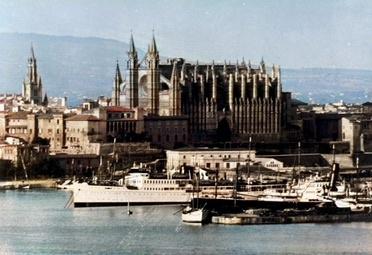Can you explain the importance of King Jaume I in the construction of La Seu Cathedral?
Similar Topics
king jaume i
la seu cathedral
palma mallorca
christian conquest
gothic cathedral
mallorca history
moorish rule
balearic islands
King Jaume I played a pivotal role in the construction of La Seu Cathedral, one of the most iconic landmarks in Palma, Mallorca. His significance lies primarily in his direct involvement in the founding and initial commissioning of the cathedral in 1229, immediately following the Christian conquest of Mallorca. After successfully leading the campaign to reclaim the island from Moorish rule, Jaume I sought to establish Christian dominance both spiritually and politically through the construction of a grand cathedral. This vision symbolized not only religious devotion but also the consolidation of his reign over the newly acquired territory.
The foundation of La Seu Cathedral is closely tied to King Jaume I's reign, as he ordered the transformation of a pre-existing mosque into a Gothic cathedral. This act underscored the shift in cultural and religious power on the island. Jaume I’s decision to erect the cathedral on the site of the former mosque served as a physical representation of Mallorca’s new Christian identity. Moreover, his patronage ensured that the project had royal support, enabling the recruitment of architects and artisans who could create a monumental building worthy of a king’s legacy. The vision of Jaume I established the blueprint for what would become a masterpiece of Gothic architecture, influencing later developments and additions to the cathedral.
King Jaume I’s importance also extends to the symbolic and historical legacy the cathedral carries. La Seu functions as a lasting monument to his leadership and the unification of Mallorca under Christian rule. Beyond its religious function, the cathedral stands as a testament to Jaume I’s ambition and his contribution to reshaping the cultural landscape of the Balearic Islands. His role is fondly remembered in local history and tourism, where the cathedral is often described as a lasting tribute to his transformative reign. Thus, King Jaume I’s involvement was fundamental in both the physical creation and the cultural significance of La Seu Cathedral.
The foundation of La Seu Cathedral is closely tied to King Jaume I's reign, as he ordered the transformation of a pre-existing mosque into a Gothic cathedral. This act underscored the shift in cultural and religious power on the island. Jaume I’s decision to erect the cathedral on the site of the former mosque served as a physical representation of Mallorca’s new Christian identity. Moreover, his patronage ensured that the project had royal support, enabling the recruitment of architects and artisans who could create a monumental building worthy of a king’s legacy. The vision of Jaume I established the blueprint for what would become a masterpiece of Gothic architecture, influencing later developments and additions to the cathedral.
King Jaume I’s importance also extends to the symbolic and historical legacy the cathedral carries. La Seu functions as a lasting monument to his leadership and the unification of Mallorca under Christian rule. Beyond its religious function, the cathedral stands as a testament to Jaume I’s ambition and his contribution to reshaping the cultural landscape of the Balearic Islands. His role is fondly remembered in local history and tourism, where the cathedral is often described as a lasting tribute to his transformative reign. Thus, King Jaume I’s involvement was fundamental in both the physical creation and the cultural significance of La Seu Cathedral.
🧩 Related Questions
Related Question
In what ways are ancient buildings like Bellver Castle maintained to protect Mallorca’s heritage?
Related Question
Can you explain the significance of Puig Major in Mallorca’s geological structure?
Related Question
What challenges do researchers face in studying cellular biology and metabolism?
